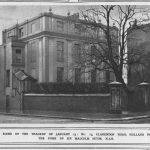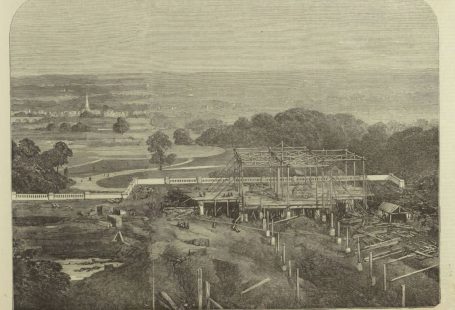40-year-old Mary Ann Cotton was arrested in West Auckland, County Durham, in 1872 after her stepson, Charles Edward Cotton, was found to have been poisoned by arsenic. During the nineteenth century, arsenic was readily available and could be bought, unregulated, from most grocers. In this special blog, using pages from the British Newspaper Archive, we explore the crimes of Mary Ann Cotton, and how arsenic played a deadly role in everyday life.
Want to learn more? Register now and explore The Archive
Glasgow Morning Journal | 25 April 1864
Indeed, arsenic was used as an ingredient for many everyday household objects, from toys to wallpaper, and the population of Victorian England faced a slow death from exposure to it. Mary Ann Cotton’s defense argued that her stepson had been exposed to contaminated wallpaper, or that it was possible that the local chemist had mistaken bismuth powder, used for the treatment of stomach upsets, for arsenic, whilst he was busy chatting to another customer.
South London Chronicle | 16 March 1878
Such mistakes were, unfortunately, not uncommon. The Bradford sweet poisoning incident of 1858 saw at least fifteen people die when they ate peppermint lozenges which had been accidentally mixed with arsenic, instead of plaster of Paris.
Dover Telegraph and Cinque Ports General Advertiser | 13 November 1858
However, it soon became apparent that Charles Edward Cotton was not the victim of some fluke accident. His stepmother was under suspicion of killing at least twenty people, many of whom had died of gastric fever, symptoms akin to those of arsenic poisoning. It was reported that Mary Ann Cotton ‘had poisoned wholesale those who ought to have been most dear to her,’ including three out of her four husbands and eleven out of her thirteen children.
Her motive? The insurance policies she had taken out on her relatives. Although it was impossible to prove whether she had killed twenty people, due to difficulties in locating bodies in churchyards, where the place of interment was not often recorded, Mary Ann Cotton was hanged for the murder of her stepson in 1873. Walking to the gallows, ‘ghastly pale with a firm step, praying audibly and earnestly, with her eyes uplifted,’ she never confessed to the crimes. You can read an account of her execution in the Witney Express and Oxfordshire and Midland Counties Herald here.
The Day’s Doings | 16 November 1872
Prior to 1836, arsenic had proved untraceable when ingested into the human body. Then along came British chemist James Marsh. In 1832 he was called to testify for the prosecution of James Bodle, who had been accused of poisoning his grandfather with arsenic. Marsh performed a test, which detected arsenic, but because the solution did not keep, the jury pronounced a not-guilty verdict.
Marsh went on to perfect his arsenic detecting methodology to produce the Marsh Test, which was first used in France in 1840. An important landmark in the development of forensic science, it meant murderers like Mary Ann Cotton were no longer able to get away with their crimes.











